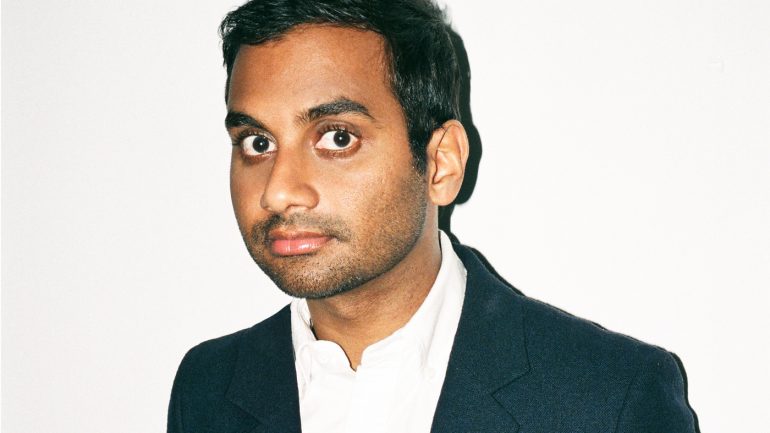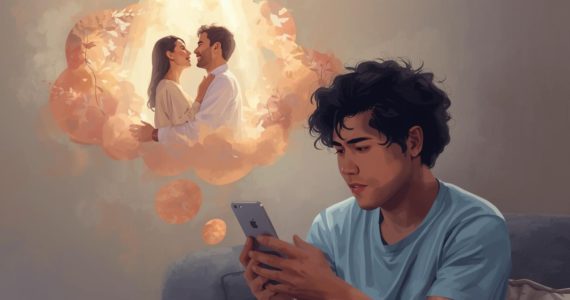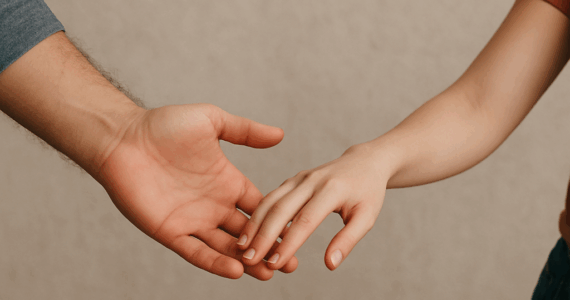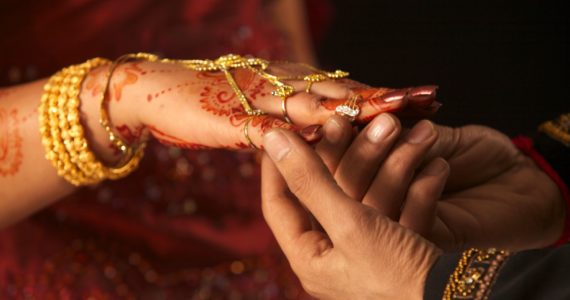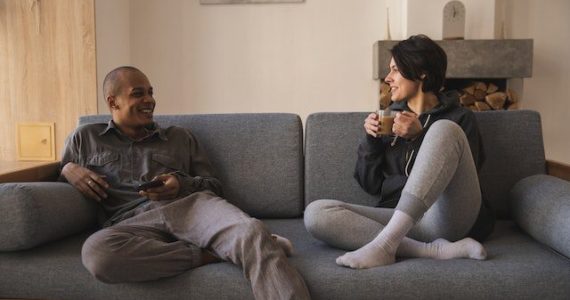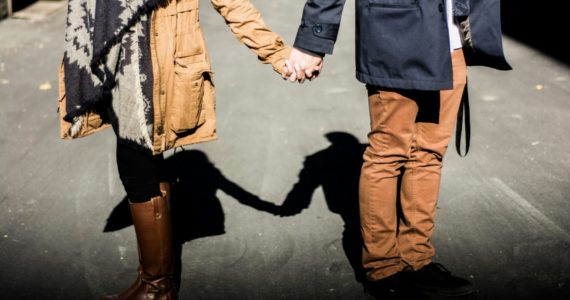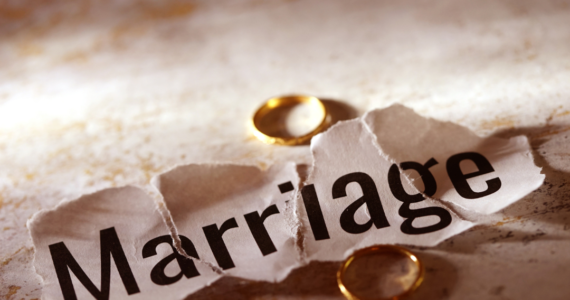Source: http://time.com/aziz-ansari-modern-romance/
My parents had an arranged marriage. This always fascinated me. I am perpetually indecisive about even the most mundane things, and I couldn’t imagine navigating such a huge life decision so quickly.
I asked my dad about this experience, and here’s how he described it: he told his parents he was ready to get married, so his family arranged meetings with three neighboring families. The first girl, he said, was “a little too tall,” and the second girl was “a little too short.” Then he met my mom. He quickly deduced that she was the appropriate height (finally!), and they talked for about 30 minutes. They decided it would work. A week later, they were married.
And they still are, 35 years later. Happily so—and probably more so than most people I know who had nonarranged marriages. That’s how my dad decided on the person with whom he was going to spend the rest of his life.
Let’s look at how I do things, maybe with a slightly less important decision, like the time I had to pick where to eat dinner in Seattle when I was on tour last year. First I texted four friends who travel and eat out a lot and whose judgment I trust. I checked the website Eater for its Heat Map, which includes new, tasty restaurants in the city. Then I checked Yelp. And GQ’s online guide to Seattle. Finally I made my selection: Il Corvo, an Italian place that sounded amazing. Unfortunately, it was closed. (It only served lunch.) At that point I had run out of time because I had a show to do, so I ended up making a peanut-butter-and-banana sandwich on the bus. The stunning fact remained: it was quicker for my dad to find a wife than it is for me to decide where to eat dinner.
This kind of rigor goes into a lot of my decisionmaking. Whether it’s where I’m eating, where I’m traveling or, God forbid, something I’m buying, like a lot of people in my generation—those in their 20s and 30s—I feel compelled to do a ton of research to make sure I’m getting every option and then making the best choice. If this mentality pervades our decisionmaking in so many realms, is it also affecting how we choose a romantic partner?
The question nagged at me—not least because of my own experiences watching promising relationships peter out over text message—so I set out on a mission. I read dozens of studies about love, how people connect and why they do or don’t stay together. I quizzed the crowds at my stand-up comedy shows about their own love lives. People even let me into the private world of their phones to read their romantic texts aloud onstage. I learned of the phenomenon of “good enough” marriage, a term social anthropologists use to describe marriages that were less about finding the perfect match than a suitable candidate whom the family approved of for the couple to embark on adulthood together.
And along with the sociologist Eric Klinenberg, co-author of my new book, I conducted focus groups with hundreds of people across the country and around the world, grilling participants on the most intimate details of how they look for love and why they’ve had trouble finding it. Eric and I weren’t digging into singledom—we were trying to chip away at the changing state of love.
Today’s generations are looking (exhaustively) for soul mates, whether we decide to hit the altar or not, and we have more opportunities than ever to find them. The biggest changes have been brought by the $2.4 billion online-dating industry, which has exploded in the past few years with the arrival of dozens of mobile apps. Throw in the fact that people now get married later in life than ever before, turning their early 20s into a relentless hunt for more romantic options than previous generations could have ever imagined, and you have a recipe for romance gone haywire.
In the course of our research, I also discovered something surprising: the winding road from the classified section of yore to Tinder has taken an unexpected turn. Our phones and texts and apps might just be bringing us full circle, back to an old-fashioned version of courting that is closer to what my own parents experienced than you might guess.
Where Bozos Are Studs
Today, if you own a smartphone, you’re carrying a 24-7 singles bar in your pocket. As of this writing, 38% of Americans who describe themselves as “single and looking” have used an online-dating site. It’s not just my generation—boomers are as likely as college kids to give online dating a whirl. Almost a quarter of online daters find a spouse or long-term partner that way.
It’s easy to see why online dating has taken off. It provides you with a seemingly endless supply of people who are single and looking to date. Let’s say you’re a woman who wants a 28-year-old man who’s 5 ft. 10 in., has brown hair, lives in Brooklyn, is a member of the Baha’i faith and loves the music of Naughty by Nature. Before online dating, this would have been a fruitless quest, but now, at any time of the day, no matter where you are, you are just a few screens away from sending a message to your very specific dream man.
There are downsides with online dating, of course. Throughout all our interviews—and in research on the subject—this is a consistent finding: in online dating, women get a ton more attention than men. Even a guy at the highest end of attractiveness barely receives the number of messages almost all women get. But that doesn’t mean that men end up standing alone in the corner of the online bar. On the Internet, there are no lonely corners. Take Derek, a regular user of OkCupid who lives in New York City. What I’m about to say is going to sound very mean, but Derek is a pretty boring guy. Medium height, thinning brown hair, nicely dressed and personable, but not immediately magnetic or charming. If he walked into a bar, you’d probably go, “Oh, there’s a white guy.”
At our focus group on online dating in Manhattan, Derek got on OkCupid and let us watch as he went through his options. These were women whom OkCupid had selected as potential matches for him based on his profile and the site’s algorithm. The first woman he clicked on was very beautiful, with a witty profile page, a good job and lots of shared interests, including a love of sports. After looking the page over for a minute or so, Derek said, “Well, she looks O.K. I’m just gonna keep looking for a while.”
I asked what was wrong, and he replied, “She likes the Red Sox.” I was completely shocked. I couldn’t believe how quickly he had moved on. Imagine the Derek of 20 years ago, finding out that this beautiful, charming woman was a real possibility for a date. If she were at a bar and smiled at him, Derek of 1993 would have melted. He wouldn’t have walked up and said, “Oh, wait, you like the Red Sox?! No thank you!” before putting his hand in her face and turning away. But Derek of 2013 simply clicked an X on a web-browser tab and deleted her without thinking twice. Watching him comb through those profiles, it became clear that online, every bozo could now be a stud.
But dealing with this new digital romantic world can be a lot of work. Answering messages, filtering profiles—it’s not always fun. Priya, 27, said she’d recently deleted her Tinder and other online-dating accounts. “It just takes too long to get to just the first date. I feel like it’s way more effective utilizing your social groups,” she said. “I would rather put myself in those social situations than get exhausted.” For Priya, as for so many of the online daters we met in different cities, the process had morphed from something fun and exciting into a source of stress and dread.
Even the technological advances of the past few years are pretty absurd. You can stand in line at the grocery store and swipe through 60 people’s faces on Tinder while you wait to buy hamburger buns. (Note: The best hamburger buns are Martin’s Potato Rolls. Trust me!) That’s 20 times as many people as my dad met on his marriage journey. In the history of our species, no group has ever had as many romantic options as we have now.
Soul Mate vs. Laundry Detergent
In theory, more options are better, right? Wrong. Psychology professor Barry Schwartz, famous for his 2004 book The Paradox of Choice, divided us into two types of people: “satisficers” (those who satisfy and then suffice) and “maximizers,” who seek out the best.
Thanks to smartphones and the Internet, our options are unlimited, whether it’s a retail item or a romantic possibility. We have all become maximizers. When I think back to that sad peanut-butter-and-banana sandwich I had in Seattle, this idea resonates with me. Besides gasoline, it’s nearly impossible for me to think of anything I won’t put in time for to find the best. I’m a maximizer for just about everything. Tacos? You better believe. Candles? If you only knew how good the candles in my house smell.
It’s easy to find and get the best, so why not do it? If you are in a big city or on an online-dating site, you are now comparing your potential partners not just to other potential partners but rather to an idealized person to whom no one could measure up.
But people don’t always know what they’re looking for in a soul mate, unlike when they’re picking something easier, like laundry detergent.
While we may think we know what we want, we’re often wrong. As recounted in Dan Slater’s history of online dating, Love in the Time of Algorithms, the first online-dating services tried to find matches for clients based almost exclusively on what clients said they wanted. But pretty soon they realized that the kind of partner people said they were looking for didn’t match up with the kind of partner they were actually interested in.
Amarnath Thombre, Match.com’s president, discovered this by analyzing the discrepancy between the characteristics people said they wanted in a romantic partner (age, religion, hair color and the like) and the characteristics of the people whom they contacted on the site. When you watched their actual browsing habits—who they looked at and contacted—they went way outside of what they said they wanted.
When I was writing stand-up about online dating, I filled out the forms for dummy accounts on several dating sites just to get a sense of the questions and what the process was like. The person I described was a little younger than me, small, with dark hair. My girlfriend now, whom I met through friends, is two years older, about my height—O.K., slightly taller—and blond. She wouldn’t have made it through the filters I set up.
A big part of online dating is spent on this process, though—setting your filters, sorting through profiles and going through a mandatory checklist of what you think you are looking for. People take these parameters very seriously. They declare that their mate “must love dogs” or that their mate “must love the film Must Love Dogs,” about a preschool teacher (Diane Lane) who tries online dating and specifies that her match “must love dogs.” (I looked it up on Wikipedia.)
But does all the effort put into sorting profiles help? Despite the nuanced information that people put up on their profiles, the factor that they rely on most when preselecting a date is looks. In his book Dataclysm, OkCupid founder Christian Rudder estimates, based on data from his own site, that photos drive 90% of the action in online dating. (Check out more of Christian’s findings on the next page.)
Now, of course, we have mobile dating apps like Tinder. Contrary to the labor-intensive user experience of traditional online dating, mobile apps generally operate on a much simpler and quicker scale. As soon as you sign in, Tinder uses your GPS location to find nearby users and starts showing you pictures. You swipe right on their picture if you might be interested, left if you’re not.
Maybe it sounds shallow. But consider this: In the case of my girlfriend, I initially saw her face somewhere and approached her. I didn’t have an in-depth profile to peruse or a fancy algorithm. I just had her face, and we started talking and it worked out. Is that experience so different from swiping on Tinder?
“I think Tinder is a great thing,” says Helen Fisher, an anthropologist who studies dating. “All Tinder is doing is giving you someone to look at that’s in the neighborhood. Then you let the human brain with his brilliant little algorithm tick, tick, tick off what you’re looking for.”
In this sense, Tinder actually isn’t so different from what our grandparents did. Nor is it all that different from what one friend of mine did, using online dating to find someone Jewish who lived nearby. In a world of infinite possibilities, we’ve cut down our options to people we’re attracted to in our neighborhood.
Passion and Patience
in relationships, there’s commitment and commitment, the kind that involves a license, usually some kind of religious blessing and a ceremony in which every one of your close friends and relatives watches you and your partner promise to stay together until one of you dies.
In the U.S., marriage rates are at historic lows—the rate of marriages per 1,000 single women dropped almost 60% from 1970 to 2012. Americans are also joining the international trend of marrying later; for the first time in history, the typical American now spends more years single than married. So what are we doing instead?
As Eric wrote in his own book, Going Solo, we experiment. Long-term cohabitation is on the rise. Living alone has skyrocketed almost everywhere, and in many major cities, nearly half of all households have just one resident. But marriage is not an altogether undesirable institution. And there are many great things about being in a committed relationship.
Look at my parents: they had an arranged marriage, and they are totally happy. I looked into it, and this is not uncommon. People in arranged marriages start off lukewarm, but over time they really invest in each other and in general have successful relationships. This may be because they bypassed the most dangerous part of a relationship.
In the first stage of a relationship, you have passionate love. This is where you and your partner are just going crazy for each other. Every smile makes your heart flutter. Every night is more magical than the last. During this phase, your brain floods your neural synapses with dopamine, the same neurotransmitter that gets released when you do cocaine.
Like all drugs, though, this high wears off after 12 to 18 months. At a certain point, the brain rebalances itself. In good relationships, as passionate love fades, companionate love arises to take its place. If passionate love is the cocaine of love, companionate love is like having a glass of wine.
In his book The Happiness Hypothesis, NYU social psychologist Jonathan Haidt identifies two danger points in every romantic relationship. One is at the apex of the passionate-love phase. People get all excited and dive in headfirst. A new couple, weeks or months into a relationship, high off passionate love, goes bonkers and moves in together and gets married way too quickly.
Sometimes these couples are able to transition from the passionate stage to the companionate one. Other times, though, they transition into a crazy, toxic relationship and/or get divorced.
The second danger point is when passionate love starts wearing off. This is when you start coming down off that initial high and start worrying about whether this is really the right person for you.
Your texts used to be so loving: It’s hard to focus on anything at work, ’cause all that’s in my head is you. Now your texts are like: Let’s just meet at Whole Foods. Or: Hey, that dog you made us buy took a dump in my shoe.
But Haidt argues that when you hit this stage, you should be patient. With luck, if you allow yourself to invest more in the other person, you will find a beautiful life companion.
I had a rather weird firsthand experience with this. When I first started dating my girlfriend, a few months in, I went to a friend’s wedding in Big Sur, Calif. I was alone, because my friend did me a huge solid and declined to give me a plus one. Which, of course, is the best. You get to sit by yourself and be a third wheel.
The vows in this wedding were powerful. They were saying the most remarkable, loving things about each other. Things like “You are a prism that takes the light of life and turns it into a rainbow” and “You are a lotion that moisturizes my heart. Without you, my soul has eczema.” It was the noncheesy, heartfelt version of stuff like that.
After the wedding, I found out about four different couples that had broken up, supposedly because they didn’t feel like they had the love that was expressed in those vows. Did they call it off too early, at their danger point? I don’t know, but I, too, felt scared hearing that stuff. Did I have what those people had? At that point, no. But for some reason, I felt deep down that I should keep investing in my relationship—as my father did, after those fateful 30 minutes of literally sizing up my mother—and that eventually that level of love would show itself. And so far, it has. Now, if you’ll excuse me, I have to figure out where to get lunch.

